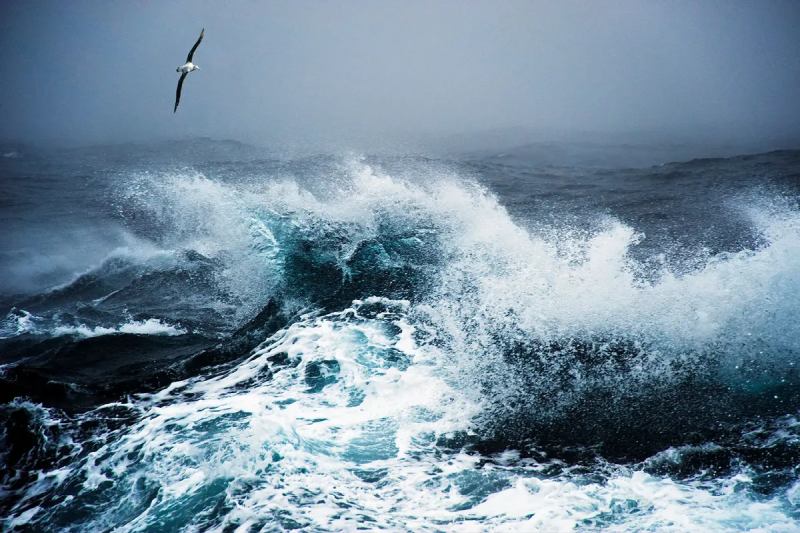A highly sophisticated computer simulation indicates that a “cliff-like” tipping point is approaching, increasing the likelihood and proximity of an abrupt shutdown of Atlantic Ocean currents that may plunge much of Europe into a deep freeze.
According to a new study published in Science Advances on Friday, a long-feared nightmare scenario brought on by Greenland’s ice sheet melting due to global warming is still decades away, if not longer, but perhaps not the centuries that it once seemed. The study tracks the strength of the crucial overall ocean circulation, which is slowing, using a critical measurement. It is the first to employ complex simulations and incorporate several components.
According to the study, it would cause the temperature in northwest Europe to drop by 9°F to 27°F (5°C to 15°C) over the course of several decades, stretch the Arctic ice far further south, increase the temperature in the Southern Hemisphere, alter global rainfall patterns, and destabilize the Amazon. According to other scientists, it would be a catastrophe that would result in a global shortage of both food and water.
Climate scientist and oceanographer Rene van Westen of Utrecht University in the Netherlands stated, “We are moving closer (to the collapse), but we’re not sure how much closer.” “A tipping point is approaching.”
The question of when this worldwide weather catastrophe—which was wildly exaggerated in the film “The Day After Tomorrow”—may occur is “the million-dollar question, which we unfortunately can’t answer at the moment,” according to van Westen. Although that’s probably a century away, he suggested it could yet occur during his lifetime. He recently turned thirty.
According to van Westen, “it also depends on the rate of climate change we are inducing as humanity.”
Research indicates that the AMOC is slowing down, but a total collapse or shutdown is the problem. The Intergovernmental Panel on Climate Change, an authoritative body including hundreds of experts that provides monthly updates on global warming, stated that it had a medium degree of confidence that a collapse won’t occur before 2100 and generally minimized the likelihood of disasters. Van Westen, a few outside scientists, and a research from last year, however, suggest that might not be the case.
Although he was not involved in the study, Stefan Rahmstorf, head of Earth Systems Analysis at the Potsdam Institute for Climate Research in Germany, referred to it as “a major advance in AMOC stability science.”
Rahmstorf stated via email that “the new study adds significantly to the rising concern about an AMOC collapse in the not too distant future.” “Ignoring this will be at our own risk.”
Not involved in the study, Tim Lenton, a climate scientist at the University of Exeter, expressed his increased concern about a collapse in light of the new data.
According to Lenton, an AMOC collapse would have a huge impact on global climate, producing “so abrupt and severe that they would be near impossible to adapt to in some locations.”
According to Wei Cheng, an oceanographer at the U.S. National Oceanic and Atmospheric Administration who was not involved in the research, there are indications that the AMOC has collapsed in the past, but it is still unclear when and how it will shift going forward.
According to NASA, the AMOC is a component of a complex global conveyor belt of ocean currents that carry warm and salt water at varying depths throughout the planet in patterns that help control temperature, absorb carbon dioxide, and feed the water cycle.
Less heat is exchanged globally when the AMOC closes, which “really impacts Europe quite severely,” according to van Westen.
The oceans of Earth have been dependent on a conveyor belt-like circulation mechanism for thousands of years. It is continuing, albeit more slowly.
This conveyor belt’s engine is located off the coast of Greenland, where more freshwater enters the North Atlantic due to climate change-related ice melting, slowing down everything, according to van Westen. Colder, fresher, deeper water travels southward across both Americas and then east past Africa in the current system.
In the meantime, warmer, saltier ocean water from the Pacific and Indian oceans surges past Africa’s southernmost point, veers toward and around Florida, and then follows the U.S. East Coast all the way up to Greenland.
The Dutch scientists included the effects of human-caused climate change in their simulation of the flow over 2,200 years. They discovered “an abrupt AMOC collapse” after 1,750 years, but they haven’t been able to connect that simulated timeframe to Earth’s actual future as of yet. Complicating the measurement of flow around the point of Africa is essential to tracking the events. AMOC runs more slowly the more negative that measurement is.
“This value is getting more negative under climate change,” van Westen said. When it reaches a certain point it’s not a gradual stop but something that is “cliff-like,” he said.
The world should pay attention to potential AMOC collapse, said Joel Hirschi, division leader at the United Kingdom’s National Oceanography Centre. But there’s a bigger global priority, he said.
“To me, the rapidly increasing temperatures we have been witnessing in recent years and associated temperature extremes are of more immediate concern than the AMOC shutting down,” Hirschi said. “The warming is not hypothetical but is already happening and impacting society now.”











